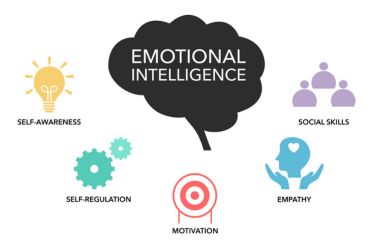Therapy animals are more than just pets; they play an essential role in supporting our mental and emotional well-being. Studies show that interaction with therapy animals can significantly reduce feelings of anxiety and depression, providing comfort to those in need. As we explore the world of animal-assisted therapy, we discover how these animals help improve physical health and enhance the overall quality of life for individuals across various settings.

In many cases, therapy animals are used in hospitals, schools, and care homes to create a calming environment. They offer non-judgemental companionship, which can be invaluable for those facing tough times. Through their presence, we can witness remarkable transformations in mental health, making it clear that these animals are not just companions but essential partners in the healing process.
In this article, we will delve into the numerous benefits of therapy animals, highlighting their impact on emotional support, psychological recovery, and even physical health improvements. As we continue to learn about their significance, we aim to deepen our understanding of therapy animals' roles in promoting well-being.
Key Takeaways
- Therapy animals help reduce anxiety and depression through comforting interactions.
- Their presence can improve physical health outcomes and emotional support.
- They play a vital role in various settings, benefiting special populations.
Understanding Therapy Animals

Therapy animals play a vital role in aiding mental and physical health. These animals can enhance emotional well-being and support recovery in various settings. In this section, we will define animal-assisted therapy, explore the different types of therapy animals, and discuss their roles in healthcare.
Defining Animal-Assisted Therapy
Animal-assisted therapy (AAT) involves guided interactions between patients and trained animals. It aims to improve a person's emotional and physical health. In AAT, the animal is not a service or emotional support animal but instead serves as a partner in a structured programme. The presence of therapy animals helps reduce stress and promotes relaxation, aiding in therapies for issues such as anxiety, depression, and recovery from physical ailments. We recognise that the bond between humans and animals can lead to substantial benefits in therapy settings.
Types of Therapy Animals
Various types of therapy animals are used to assist individuals. Common options include therapy dogs, cats, rabbits, guinea pigs, and even horses. Each type of animal contributes unique advantages. For example, therapy dogs are often used in hospitals and schools because of their gentle and loving nature. Cats can provide comfort in less structured environments. Horses are used in equine therapy, which can improve emotional awareness and physical skills. Each therapy animal is selected based on their temperament and training to best support our needs.
The Role of Therapy Animals in Healthcare
In healthcare, therapy animals assist in creating a calming and healing environment. They can help reduce feelings of loneliness and anxiety among patients. These animals often participate in therapy sessions, offering companionship and motivation during rehabilitation. We see therapy animals in hospitals, nursing homes, and mental health facilities. Programs involving therapy animals can enhance patient outcomes by improving mood, lowering blood pressure, and increasing overall engagement in treatment. This interaction fosters a bond that can significantly aid in recovery and emotional support.
Mental and Emotional Benefits
Therapy animals provide significant mental and emotional support for individuals facing various challenges. Their presence can alleviate symptoms of mental health disorders and enhance overall emotional well-being. We explore how these animals can help with depression, anxiety, autism spectrum disorders, and improve social skills and relationships.
Alleviating Symptoms of Depression
Therapy animals offer a unique source of companionship that can combat loneliness, a common symptom of depression. Their unconditional love and presence can help lift our spirits and motivate us to engage in daily activities.
Interacting with pets encourages us to smile and feel joy, which can lead to the release of serotonin and dopamine. These neurotransmitters are crucial for mood regulation.
Additionally, caring for an animal gives us a sense of purpose, which can be beneficial in managing depressive symptoms. Studies have shown that individuals who engage with therapy animals report improved mood and decrease in feelings of sadness.
Reducing Anxiety and Stress
Animals have a calming effect that can significantly reduce anxiety and stress. When we pet or cuddle with a therapy animal, our bodies release oxytocin, which helps promote relaxation.
The simple act of being around animals can also distract us from stressors in our lives, providing a necessary break from overwhelming thoughts. The presence of a therapy animal can create a peaceful environment and reduce physiological symptoms of anxiety.
Research indicates that individuals with anxiety disorders find immense comfort in animal-assisted therapy. By lowering cortisol levels and increasing feelings of safety, therapy animals play a vital role in supporting our mental health.
Supporting Autism Spectrum Disorders
For many on the autism spectrum, therapy animals can serve as a bridge for communication and social interaction. They provide a non-judgmental presence that can help ease social anxieties and encourage engagement.
Interacting with animals can improve our communication skills. We often find that children with autism engage in more verbal and non-verbal communication when a therapy animal is present.
In addition to facilitating interaction, therapy animals can help with emotional regulation. The bond with an animal makes it easier for us to express our feelings and navigate social situations.
Enhancing Social Skills and Relationships
Therapy animals can improve our social skills, making it easier to form and maintain relationships. They often serve as conversation starters, helping us connect with others who share an interest in animals.
Animals can also teach us empathy and responsibility. By caring for a therapy animal, we learn how to understand and respond to the emotional needs of others, which is crucial for healthy relationships.
Moreover, the comfort provided by therapy animals allows us to feel more secure in social settings. This confidence can enhance our ability to interact with peers and build stronger connections.
Physical Health Improvements

Therapy animals provide several benefits that can enhance physical health and aid in recovery. We will explore how animal-assisted interactions promote physical activity, support those with chronic illnesses, and contribute positively to cardiovascular health.
Physical Activity and Recovery
Engagement with therapy animals encourages us to be more active. For example, walking a dog or interacting with a horse can help improve our balance and coordination.
This type of physical activity is crucial for recovery, especially after surgery or injury. Studies show that individuals who participate in therapy animal programmes often experience quicker recovery times. Increased movement stimulates the release of endorphins, which can improve our mood and overall well-being.
Moreover, spending time with animals increases levels of oxytocin, a hormone linked to bonding and stress relief. This connection can further motivate us to engage in physical activities.
Benefits for Chronic Illnesses
Therapy animals also provide significant support for those with chronic illnesses. Interacting with animals can help reduce symptoms of stress and anxiety.
For many, the presence of a therapy animal leads to an increase in serotonin levels, which can positively affect mental health. This uplift in mood helps individuals manage the emotional aspects of chronic conditions.
Additionally, the soothing presence of animals can support our immune system. Research indicates that regular interaction with pets can enhance immune response, which may improve our overall health.
Animal Interaction and Cardiovascular Health
We cannot overlook the impact of therapy animals on cardiovascular health. Research indicates that spending time with these animals can lower blood pressure and reduce heart rates.
The calming effect of petting or playing with an animal helps promote relaxation. It reduces feelings of anxiety, which can be beneficial for our hearts.
Regular interactions with therapy animals may also lead to healthier lifestyle choices. When we feel less stressed and more motivated, we are more likely to engage in physical activity that contributes to good cardiovascular health.
Psychological Effects of Therapy Animals

Therapy animals play a significant role in enhancing our mental health. They impact self-esteem, reduce stress, and foster empathy in various settings. Understanding these psychological effects can help us appreciate their value in mental health interventions.
Impact on Self-Esteem and Confidence
Therapy animals can positively influence our self-esteem and confidence. Interacting with these animals often leads to feelings of acceptance and support. For instance, when we pet a therapy dog, we may experience a surge of oxytocin, which helps to enhance our mood and self-worth.
Several studies suggest that therapy animal interactions can lead to improved social skills. This is particularly beneficial for those who struggle with social anxiety or isolation. By providing companionship, therapy animals help us feel less alone, allowing us to engage more freely in social situations.
Stress Reduction and Relaxation
The presence of therapy animals is associated with significant stress reduction. Research has shown that spending time with animals can lower levels of cortisol, the hormone related to stress. In contrast, levels of prolactin, linked to relaxation and calmness, increase during these interactions.
When we interact with therapy animals, our heart rates often decrease. This physiological response contributes to a feeling of relaxation. By creating a comforting environment, these animals allow us to escape daily pressures. Facilities like hospitals and schools increasingly utilise therapy animals to help us manage stress and anxiety.
Fostering Empathy and Emotional Intelligence
Therapy animals also play a crucial role in fostering empathy and emotional intelligence. When we care for animals, we learn to identify and respond to their needs. This process helps us develop a greater understanding of others' feelings and emotions.
In therapy settings, animal-assisted interventions have proven effective in enhancing our ability to empathise. Activities involving therapy animals often encourage collaboration and communication, especially in group settings. This unique form of interaction allows us to express ourselves and connect with others on an emotional level, enriching our understanding of human emotions.
Special Populations and Settings
Therapy animals provide significant support in various environments, contributing to mental and emotional well-being. These settings include schools, healthcare facilities, and rehabilitation centres, where interactions with animals have been shown to enhance healing and support recovery.
Therapy Animals in Schools
In educational settings, therapy animals help create a positive atmosphere for students. They can reduce anxiety, improve focus, and promote social skills. Programs involving therapy dogs have been implemented in several schools.
Students benefit from reading to animals, which boosts their confidence in literacy. This activity fosters a non-judgmental environment where children feel safe to express themselves. Additionally, therapy animals can assist students with special needs, offering comfort and support during stressful situations.
Support for Dementia and Alzheimer’s
In nursing homes and rehabilitation facilities, therapy animals play a crucial role in supporting individuals with dementia and Alzheimer’s. Interaction with animals has been shown to stimulate memories and evoke positive emotions.
Pet therapy can help reduce anxiety and agitation in patients. By fostering connections through touch and companionship, therapy animals soothe and engage individuals who may feel isolated. This interaction not only enhances emotional well-being but can also improve social skills, making it easier for patients to connect with caregivers and family members.
Assistance in Rehabilitation Centers
Rehabilitation centres often incorporate therapy animals into treatment plans. These animals provide motivation and companionship as individuals work through physical and emotional challenges.
For instance, therapy dogs can assist in physical therapy by encouraging patients to engage in exercises. The presence of an animal can also reduce feelings of loneliness that often accompany recovery. This support not only aids physical healing but also enhances mental resilience.
Interventions for Substance Use Disorders
Therapy animals are increasingly used in treatment facilities for individuals recovering from substance use disorders. Interacting with animals can help reduce cravings and anxiety, creating a calming effect during recovery.
Animals offer unconditional love and connection, which can be particularly beneficial during the often-challenging process of rehabilitation. They provide emotional support that complements traditional therapies, fostering a sense of community and accountability among individuals in treatment. As a result, therapy animals contribute significantly to the healing journey.
Training and Effectiveness
We recognise the importance of proper training and assessment for therapy animals. Understanding the requirements for handling, standards in training, and evaluating the impact of animal-assisted therapy (AAT) ensures that these animals contribute effectively to therapeutic interventions.
Requirements for Therapy Animal Handling
To become a therapy animal handler, we must develop specific skills and attributes. Handlers should be compassionate, patient, and able to maintain calm in various situations.
Key requirements include:
- Knowledge of animal behaviour: Understanding how animals react can enhance safety for both the animal and those involved in therapy.
- Communication skills: Clear communication with both the therapy animal and the clients promotes effective teamwork.
- Emotional resilience: Handlers must manage their emotions while supporting others, ensuring a positive environment for everyone.
These traits together create a nurturing atmosphere that optimises the therapeutic benefits of animal-assisted therapy.
Standards for Training and Certification
Training protocols for therapy animals vary by organisation but generally focus on behavioural assessment and skill development. We adhere to specific standards to ensure the safety and effectiveness of therapy animals.
Training criteria often include:
- Basic obedience training: This lays the groundwork for good behaviour in various settings.
- Socialisation: Animals should be accustomed to different environments, people, and other animals.
- Assessment for temperament: Only animals that show a calm and friendly disposition are typically selected to participate.
Certification from recognised bodies ensures consistency and maintains a high standard for therapy animal programmes.
Assessing the Impact of Animal-Assisted Therapy
The effectiveness of AAT can be evaluated through various methods. We assess health outcomes and quality of life improvements in participants after engaging with therapy animals.
Assessment techniques include:
- Surveys and questionnaires: Collecting feedback from clients and handlers can identify the emotional and physical benefits received.
- Clinical evaluations: These help measure changes in mental health indicators before and after therapy sessions.
- Observation: Trainers often observe interactions to assess the dynamics between the animal and clients.
By implementing these evaluation methods, we can better understand the therapeutic benefits of animal-assisted therapy and strive for continued improvement in our programmes.
Additional Considerations
When discussing therapy animals, it is crucial to consider ethical implications, cultural attitudes, and the future of animal-assisted therapy. Understanding these aspects helps us appreciate the broader context of therapy animals and their impact on society.
Ethical Implications
The use of therapy animals raises important ethical questions. We must ensure that animals are treated with care and respect. Their welfare should always come first. Proper training and socialisation are vital to ensure that these animals are comfortable in various settings.
Additionally, we should consider the qualifications of handlers. Only trained professionals should facilitate animal interactions to prevent any potential harm to the animal or the individual receiving therapy. We also need to be cautious about the selection of therapy animals; not all pets are suited for this type of work. This approach ensures that human-animal interactions are positive and beneficial for both parties.
Cultural Attitudes Toward Animal Therapy
Cultural perceptions of therapy animals can vary significantly. In some cultures, animals are seen purely as companions, while in others, they hold deeper symbolic meanings. We should recognise these differing views to increase the acceptance and integration of animal therapy in various settings.
Furthermore, the stigma surrounding mental health can affect how people view therapy animals. In societies where mental health discussions are less open, people may hesitate to embrace animal-assisted therapy. We must raise awareness about the positive outcomes of animal interaction to help shift these attitudes. Education can play a pivotal role in changing perceptions and promoting the benefits of therapy pets.
The Future of Animal-Assisted Therapy
As we look to the future, animal-assisted therapy is likely to evolve further. Research is ongoing to explore new methods and techniques that enhance the therapeutic process. We can expect to see more standardised assessments to measure the effectiveness of therapy animals.
Health care settings may increasingly incorporate therapy pets as part of their treatment plans. This integration could lead to improved communication skills among patients, enhanced companionship, and a stronger support system. As we continue to study the effects of therapy animals, we will learn how best to maximise their potential in healthcare and emotional well-being.
Frequently Asked Questions
In this section, we will address common questions regarding therapy animals and their effects. We will explore their positive impacts on mental health, applications in educational settings, and the potential drawbacks of these therapeutic interventions.
What positive effects do therapy animals have on mental health?
Therapy animals can help reduce anxiety and improve mood in individuals facing various mental health issues. They offer companionship, which can lead to lower stress levels and increased feelings of comfort. The presence of a therapy animal can create a calming environment that aids in emotional healing.
How does animal-assisted therapy support educational outcomes in schools?
In educational settings, animal-assisted therapy can enhance student engagement and focus. Interactions with therapy animals have been shown to improve students' social skills and emotional regulation. This support can lead to better academic performance and a more positive school experience.
What are the psychological advantages of engaging with animal therapy?
Engaging with therapy animals can foster feelings of safety and trust. This can make individuals more open to sharing their thoughts and feelings. The act of petting or interacting with an animal may also trigger the release of hormones that enhance mood and reduce stress.
In what ways can pet therapy contribute to treating depression?
Pet therapy has been effective in alleviating symptoms of depression. The presence of a pet can provide motivation for individuals to engage in daily activities. Additionally, the unconditional love and companionship from animals can combat feelings of loneliness.
Who are the primary beneficiaries of pet therapy services?
Pet therapy services benefit a wide range of individuals, including those with mental health conditions, patients in healthcare settings, and students with learning challenges. Families and caregivers also see advantages as these services can support the emotional needs of loved ones during difficult times.
What are the potential drawbacks of animal-assisted therapy?
While there are many benefits, animal-assisted therapy could pose challenges. Some individuals may have allergies or fears related to animals. There are also considerations regarding the welfare of therapy animals and the need for proper training and supervision to ensure safe interactions.





















